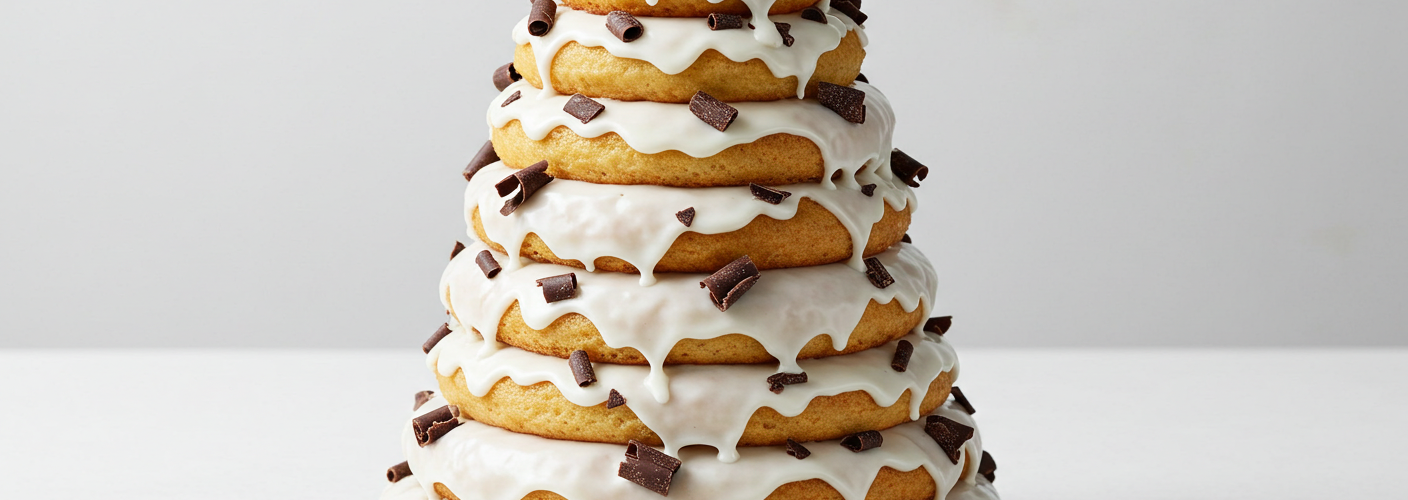When one thinks of Danish cuisine, images of pastries and intricate confections often come to mind. Among these delightful treats is Kransekage, a traditional Danish cake that has earned a cherished spot in the hearts of locals and visitors alike. Kransekage, which translates to “ring cake” in English, is a show-stopping dessert that combines both elegance and flavor, making it a staple at celebrations throughout Denmark, especially during weddings, Christmas, and New Year’s Eve.
The Unique Structure of Kransekage
At first glance, what sets Kransekage apart is its stunning presentation. This cake is constructed from a series of almond cake rings, masterfully layered to create a conical shape. The texture is distinctive; it’s chewy and slightly crispy on the outside, yet moist and flavorful within. The base of Kransekage is typically made from marzipan, which gives it a rich almond flavor and a satisfying density. Each ring varies in size, creating the conical shape that is both eye-catching and enjoyable to eat.
To prepare Kransekage, ground almonds are mixed with icing sugar and egg whites, then formed into rings that are baked until just golden. Once cooled, the rings are stacked on top of one another, starting with the largest at the bottom and culminating with the smallest at the top. This structure not only looks fabulous but also allows guests to easily slice off a piece from any level.
Icing and Adornments
The finishing touch to Kransekage is its decorative icing. A simple yet elegant glaze is crafted from powdered sugar and water, often flavored with lemon juice or almond extract to enhance the overall taste. This icing is skillfully drizzled over the cake, but it is not uncommon to see chocolate embellishments or colorful decorations adorning the rings for extra flair. Marzipan figurines or nuts can also be used to dress the cake, making it not only a treat for the palate but also for the eyes.
A Cake for Every Occasion
Kransekage is deeply embedded in Danish culture as a symbol of celebration and joy. It is often presented during significant life events such as weddings, christenings, and milestone birthdays. The cake is also a popular choice during festive seasons, particularly around Christmas and New Year’s Eve, where the towering structure signifies prosperity and good fortune for the year ahead.
In Denmark, it is customary to share Kransekage with family and friends, adding to the cake’s charm. The cake is frequently paired with a glass of champagne or a sweet dessert wine, making it an indulgent treat that elevates any gathering.
Making Kransekage at Home
For those intrigued by the idea of creating Kransekage at home, the good news is that it is relatively straightforward, although a bit time-consuming. The key ingredients are ground almonds, icing sugar, and eggs—accessible items that yield a delightful outcome. A variety of recipes exist online to guide you through the process, ensuring that your homemade Kransekage will impress your guests.
In conclusion, Kransekage is not just about taste; it is about tradition, community, and celebration. Whether you are a seasoned baker or a curious enthusiast, creating and enjoying this beautiful cake can bring a piece of Danish culture into your home, making any occasion feel just a bit more special. So, gather your ingredients, invite your loved ones, and get ready to savor the delightful experience that is Kransekage!




Add comment